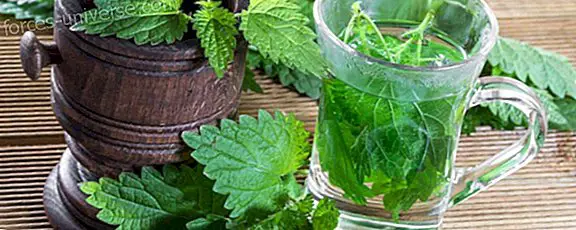
FAMILY: Valerianáceas. Valeriana Ceratophylla Valeriana officinalis L. Other names: valerian minor, cat grass, cat root, valreana, breezes, veil beidenkatu, pufabelarr, jungle head, amantilla
Valerian is a herbaceous, perennial and tuberous plant of the Valerianáceas family.
Its flavor is slightly sweet and bitter, with a characteristic smell. Its stem is straight, erect, hollow and somewhat hairy and usually measures between half a meter and two meters. Its leaves are split into pointed flakes has brown nuts. Its flowers are soft pink or white, small and fragrant, grouped in umbeliform tops appear from the beginning of summer to the end. The root is aromatic especially when it is fresh, when drying out a foul smell that attracts cats powerfully, hence its name "cat grass". Its distribution is practically universal, it can be found in the wild in the meadows, river margins, humid forests although it is also cultivated. Its many varieties differ by the color of the flowers, but they all have the same effect.
Spring or autumn are the best times for collection. They are unearthed, the roots are cleaned well, brushed to remove the root hairs and then hung in the shade. When they start to dry we will recognize the typical smell of the roots.
This plant has been used since time immemorial, for its known properties to treat nervous system conditions. Its typical uses are as sedative, muscle relaxant, supportive, calming, anticonvulsant, anxiolytic, soothing, technical, antispasmodic and hypnotic.
Used in cases of :
- Hyperexcitability, insomnia, anxiety, depression, stress, dizziness, nervous asthma, hysteria, spasms, palpitations caused by anxiety states.
- Intellectual exhaustion, nervous exhaustion, irritability, migraines and migraines (tension or migraine headaches)
- Cardiac or digestive disorders of nervous origin, (tachycardia, intestinal spasms, nervous gastritis, nervous vomiting)
- Dysmenorrhea, premenstrual painful syndrome
It is said that this plant is the most important of all those that have sedative properties of the nervous system, digestive organs and others that are regulated by the neurovegetative system. This makes it valuable in the treatment of headaches, nervous disorders of the heart, insomnia, etc.
Traditional Preparations
To prepare tea or eyelid, the desired amount of water is heated, when it is very hot it is removed from the heat and 10 to 30 grams of root (dry or fresh) is added per liter of water, cover the pot and let it rest for two to three minutes before drinking. It is recommended that you use pewter, ceramic or glass pots, since metal and mud contain chemical elements that combine with the components of herbs and can cause poisoning reactions.
To prepare an infusion of valerian we use 20 gr. of crushed root per liter of water or 1 teaspoon of tea per cup. Drink 2 to 4 cups a day.
The green grass, mashed and applied on the head, expels the pain from it.
As a sedative and to combat migraines too, a cup of cold water is usually prepared to which 2 teaspoons of shredded root is added, let it macerate half a day, strain and sweeten, and take 1 or 2 cups a day.
For insomnia, the previous preparation can be used by heating and taking it one before bedtime and another during the day. We can prepare but a sedative and antispasmodic tincture by adding to 100 milliliters of 70º alcohol, 25 grams of crumbled root, which we let macerate for 10 days. Take ten drops 3 times a day, if desired, sweetened with honey or sugar.
In the case of pain, compresses can be applied. To prepare a decoction of 50 grams of dried root boiled in a liter of water for 10 minutes; Then a cotton cloth is soaked and applied to the painful area until it cools. Another way to rebuild and relieve pain is to practice friction. For this, essential oil (1-2 drops) diluted in melissa alcohol (150 milliliters) is applied. Another highly recommended thing is to enjoy a relaxing bath so that 1 to 2 liters of filtered decoction of valerian root (a handful per liter) is added to the hot water of the bathtub. The bath will last between 15 and 20 minutes.
Another very curious preparation is Valerian wine. To prepare it, we add 200 grams of crushed rhizome to a liter of wine. We keep it for two weeks, stirring the bottle every day. We can drink two to three cups (coffee type) maximum every day.
Precautions
Valerian does not have to know toxic effects although it should not be administered to people with gastroduodenal ulcer or in treatments with anticoagulants or hemostats. It is contraindicated during the first trimester of pregnancy and infants. People who drive or use dangerous machinery should take special care with the dose, since in large quantities it produces sleep. Prescribing discontinuously treatments of 8 to 10 days are recommended, with intervals of 2 to 3 weeks. Finally, we must not forget that it is the naturopathic doctor who must determine the duration of the treatment.
Composition :
Iridoid esters: valepotriates or valtrates, baldrinal · Essential oil: contains between 0.5 and 1.5%. It is quite complex containing monoterpenic and sesquiterpenic hydrocarbons such as alpha pinene, fenchene, camphene, beta pinene, limonene, beta bisabolol, alpha curcumene, vallene, and cryophene. We also find ketones, hesperético acid also called isoferúlico, aldehydes, alcohols and terpenic esters such as valeranone and valerenone, bornyl isovalerianato and valerenal. The essential oil is found in greater concentration in the secondary roots than in the main one. · Alkaloids: are between 0.05 and 0.1%. The following stand out: actinidine, isovaleramide, valerin, valerianin, chatinin, and pyrril-alpha-methyl ketone. When it is dry, isovaleric acid is formed, which is responsible for its characteristic smell. (mifarmacia.es)
Valerian






